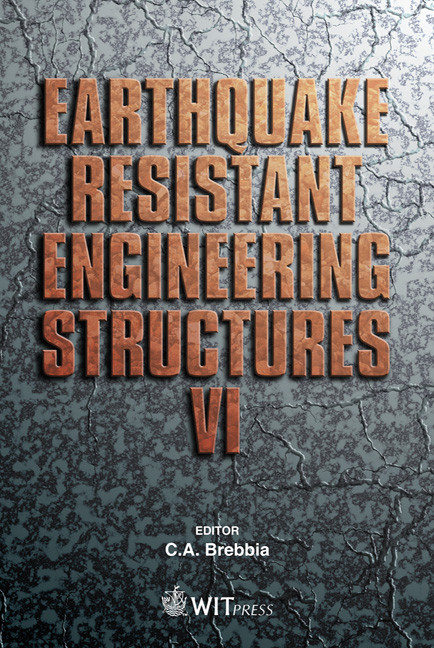Aspects Of Testing A Large-scale Two-span Bridge Model On Multiple Shake Tables
Price
Free (open access)
Transaction
Volume
93
Pages
10
Published
2007
Size
731 kb
Paper DOI
10.2495/ERES070091
Copyright
WIT Press
Author(s)
N. Johnson, M. Saiidi & D. Sanders
Abstract
A quarter scale model of a two-span reinforced concrete bridge was recently tested using the NEES multiple shake table system at the University of Nevada, Reno. The project was funded through a Network for Earthquake Engineering Simulation (NEES) demonstration grant. The prototype was designed using the provisions of the National Cooperative Highway Research Program document 12-49 for seismic design of highway bridges. The input shake table motions included the soil-foundation-structure-interaction effects. The bridge was designed for \“life safety”. Test results demonstrated that the model met the performance objectives for both earthquakes. Additional analytical studies were conducted to evaluate the bridge model response for design spectra-compatible, synthetic ground motions. Many important lessons were learned in the course of designing, constructing, testing, data interpretation, and extensive analytical studies that followed. These lessons demonstrated the system effects on individual piers and the structure, ramifications of multi-support excitation testing, performance under design earthquakes, effect of redundancy in the lateral loading system, and the effectiveness of existing analytical models in replicating the response. The presentation and the paper will provide the highlights of the experimental and analytical studies and a summary of important results and conclusions. Keywords: shake table, bridge, earthquake, experimental testing, columns, reinforced concrete, NCHRP 12-49.
Keywords
shake table, bridge, earthquake, experimental testing, columns, reinforced concrete, NCHRP 12-49.





